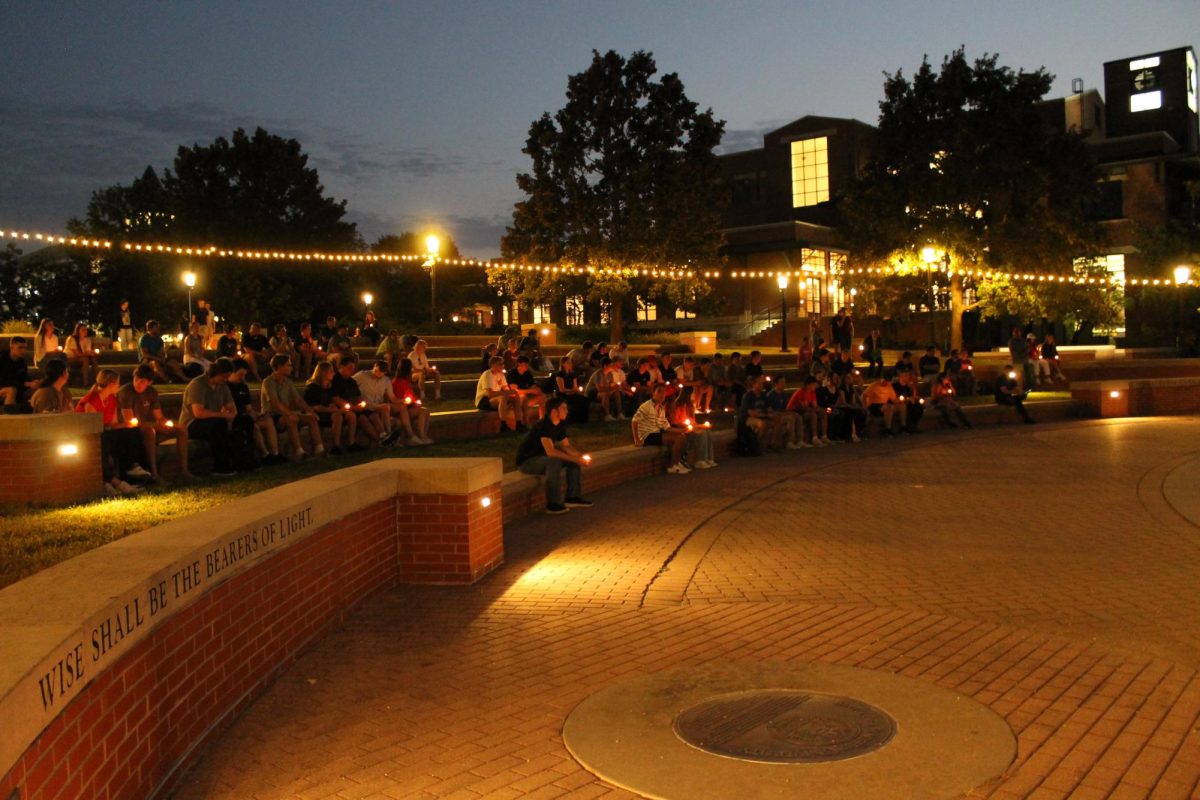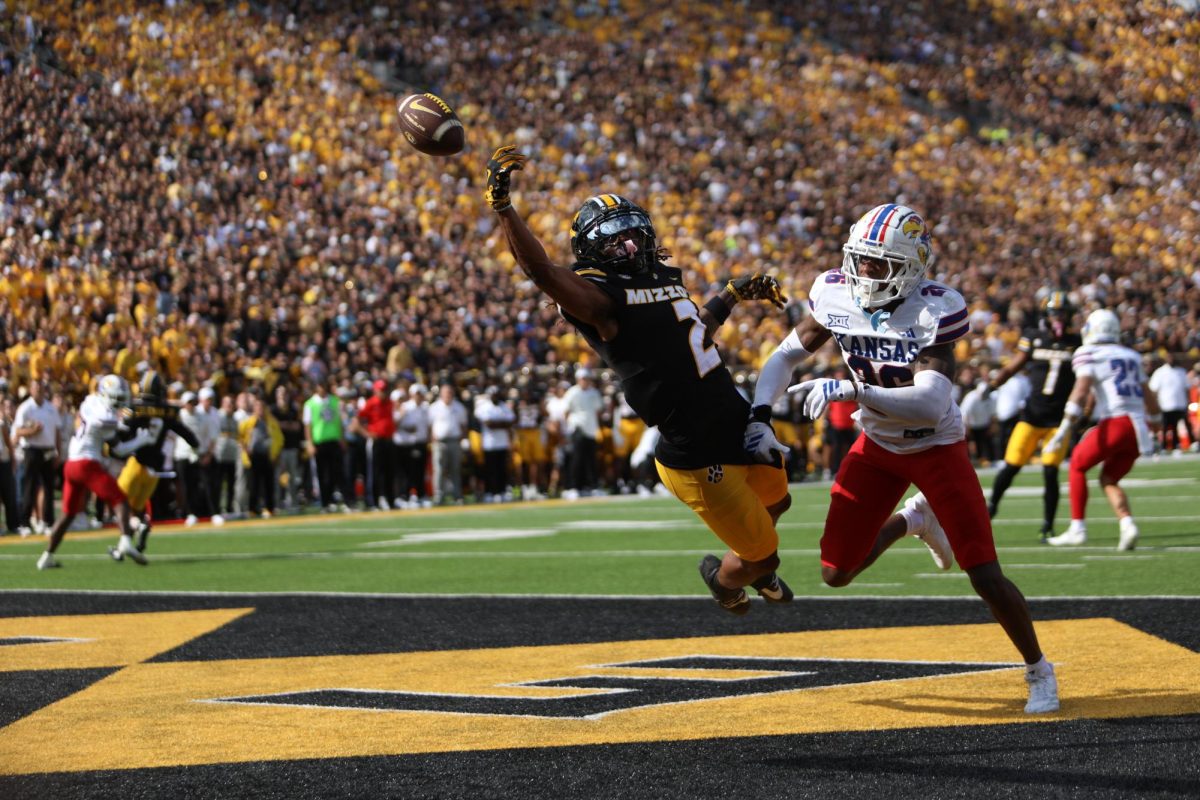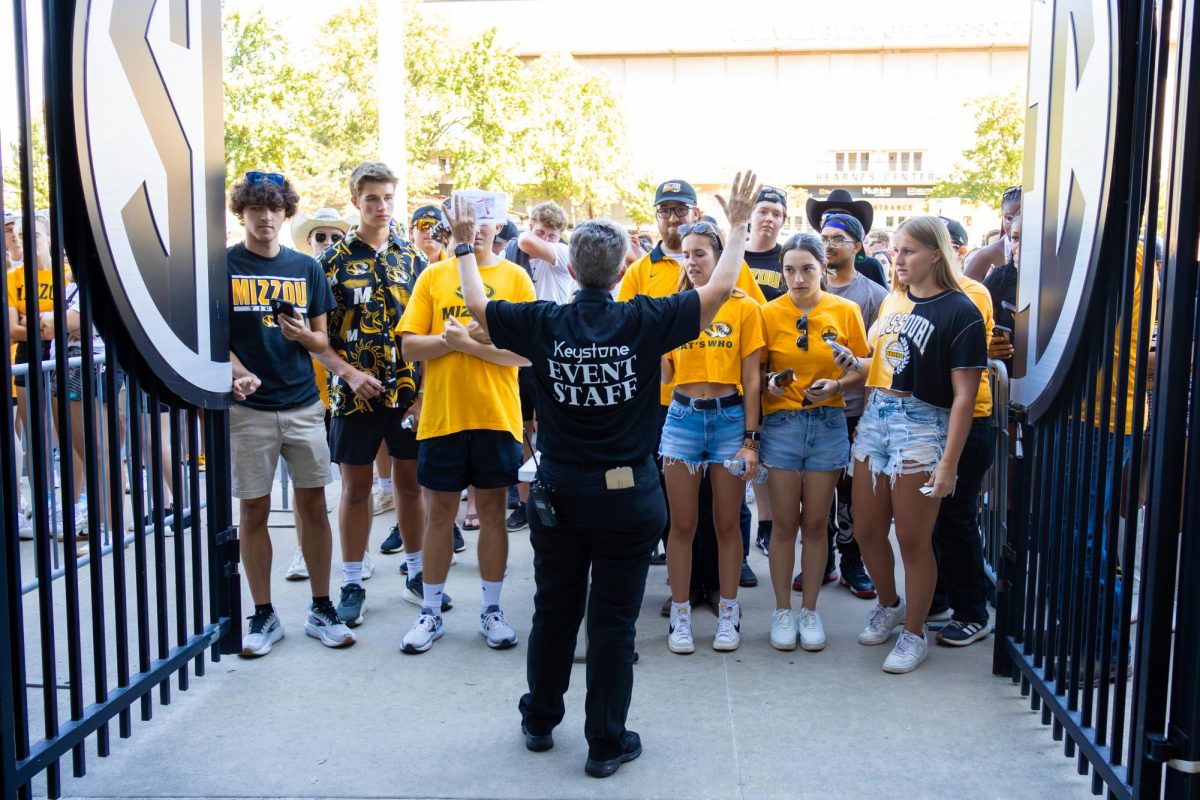_This story has been updated to reflect additional information regarding the locations of the negatives before they were moved to the University of North Carolina at Chapel Hill._
When journalism professor Berkley Hudson was growing up in segregated Columbus, Mississippi, photographer O.N. Pruitt recorded life in the town with his camera. Now, after a 30-year research and curation process, Hudson is bringing the 142,000-photo collection taken by Pruitt and his assistant, Calvin Shanks, to MU.
A portion of the collection, titled “Possum Town,” is currently being showcased in three different venues throughout Columbia — the McDougall Center Gallery in Lee Hills Hall and the Reynolds Journalism Institute until May 5 and Ragtag Cinema until April 4.
The project was spearheaded by five childhood friends who grew up in Columbus: Hudson, brothers Mark and David Gooch, Birney Imes and Jim Carnes.
Pruitt, whose life spanned from 1891 to 1967, was a photographer in Columbus. During his career, he captured life events, both gruesome and beautiful, from lynchings to baptisms. In 1960, Pruitt handed off his business to Shanks. It was not until Mark Gooch started his own project on a street called Catfish Alley in Columbus that the group discovered the variety of the photos.
“It started out when I was doing oral histories about a street called Catfish Alley,” professional photographer Mark Gooch said. “That was where black and white in Columbus met. It’s a commercial area, and it has great history. It’s just one block, so I was looking for pictures that would illustrate Catfish Alley.”
He visited Pruitt’s old studio to find Pruitt’s pictures of Catfish Alley, only to discover that the negatives of the photographs were in decaying condition. When he shared his findings with his childhood friends, the men decided to do something about it. They saw the negatives as their responsibility.
Upon finding the negatives, the group went to Shanks, who was planning to make the pictures into calendars, but Shanks refused their offer to purchase the photos. It was not until 13 years later, in 1987, after Shanks’ family had sold the photos to a new handler, Billy Frates, that the group purchased them.
“We bought them, and then a friend of mine came up and said, ‘Do you know about the secret negatives?’ and we were like, ‘No, we didn’t know,’” Mark Gooch said. “So, we found another person that had the more sensitive negatives, you know the lynchings and the hangings, so we had to make a different deal with him.”
Though Pruitt captured racially charged, sensitive moments in history, his pictures remain objective. Both white and black were equal under the lens and in the studio. But Pruitt’s photographs reveal the racial segregation of their time, Hudson said.
“I would encourage you to slow down, slow down and look at pictures and look at how they speak to you,” said Hudson, who serves as a chair on Faculty Council’s Race Relations Committee. “It could be argued that Jonathan Butler made the same argument, that African Americans, students of color, are treated as second-class citizens. Now there’s a lot of complexity to that argument, but it behooves us to think about, ‘How come?’ So, I think these photographs open up doorways to history, culture, identity and race relations.”
Both Mark Gooch and Hudson believed that Columbus was a peaceful town — they were kept blissfully unaware of the fact that 19 lynchings were recorded in their county alone.
“It shocked me,” Mark Gooch said. “It’s like you’ve been lied to all this time. I thought I lived in a peaceful community when it was anything but a peaceful community.”
A specific photo that Hudson notes is a photo of Sylvester Harris, a black man living in Columbus, standing with his mule in front of the house he was previously in danger of losing in 1934. It took Hudson 10 years to find the story behind the picture.
“So [Harris] was going to lose his house during the Depression,” Hudson said. “I just used to take that picture around town and show it to everybody and ask them if they knew who this guy was or this mule. This was before Google.”
Hudson searched for the story by rifling through old newspapers.
“I just looked at every page, and then I got to 1934,” Hudson said. “That’s how I found out what his name was. I got to 1934 and [the picture] was on the front page of the local newspaper.”
Hudson knew the man’s name was Sylvester Harris and that Harris called President Franklin Roosevelt in hopes of saving his house during the Great Depression. Unsatisfied with this small bit of information, Hudson continued his search.
Finally, a Columbus politician led Hudson to the Harris family farm, which was saved by the president. There, Hudson met descendants of Harris, who didn’t know much about their ancestor other than the fact that they were living on the farm that the president had saved. From a torn-out article given to Hudson at the farm, Hudson was led to many other published articles.
“It was like one page, and it was about Sylvester Harris, and it said Brown v. Board of Education was in the story, so I knew that was May 1954,” Hudson said. “So I knew wherever this appeared, it was after May 1954. The typeface looked like Ebony Magazine … So I went to Ellis Library and I started with Ebony Magazine’s May 1954, and then I moved forward.”
From his findings in the bound volumes, Hudson was able to find different articles on Harris from newspapers from all over the country, including the New York Times and the New York Herald Tribune.
The project was a major undertaking. Hudson, Carnes and Imes all looked to find the stories behind the photos — Hudson said he conducted around 50 interviews. David Gooch works in financial investment and focused more on the legal and financial aspects of the project. Mark Gooch was the handler of the negatives until they were moved from two locations in Columbus, Mississippi, as well as his studio in Birmingham, Alabama, to the University of North Carolina at Chapel Hill to keep the photos safe.
“First thing is save the negatives, then we wanted to at some point have an exhibit, so this is 30 years ago for the exhibit,” Mark Gooch said. “Then we thought it would be nice to have a book, and then we thought it would be nice to have some way to give back to the community. We were gonna buy the negatives, but they really belonged to the community. The pictures, the images. And then the last thing that we wanted to do was find a permanent home, you know, just realizing our own mortality. We wanted to find a place, an institution that would protect them and take care of them.”
_Edited by Katherine White | [email protected]_







